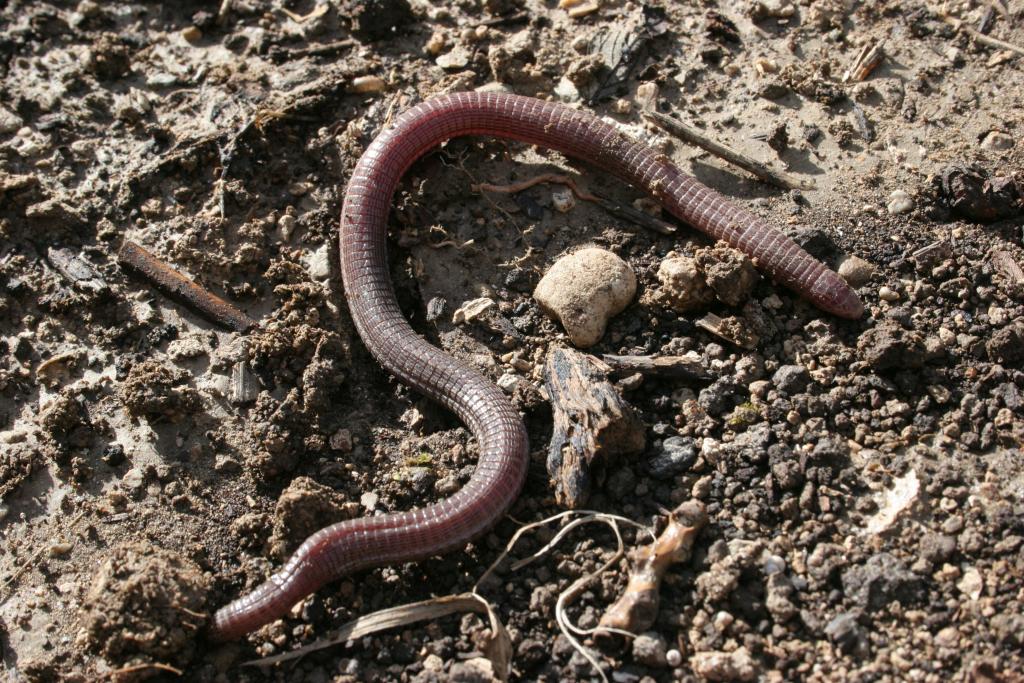- Spanish: Culebrilla ciega del Suroeste Ibérico
- Scientific: Blanus mariae – (Formerly Blanus cinereus)
- English: Southwest Iberian Worm Lizard
- French: Amphisbène de Maria
- German: Südwestiberische Netzwühle
- Italian: Blano cenerino
- Portuguese: Cobra-cega
Update August 2022
Blanus mariae, described by Albert and Fernández (2009) after the recognition of two distinct genetic lineages in the Peninsula, was recently synonymized with B. cinereus by Ceríaco and Bauer (2018) due to a misidentification of the type locality of the latter species by Albert and Fernández (2009). Because of this, the genetic lineage that was formerly considered to represent B. cinereus, found in the central and eastern portions of the Iberian Peninsula, was referred by Ceríaco and Bauer (2018) to the new species B. vandellii; whereas, the southern lineage (formerly representing B. mariae) is now referred to B. cinereus. Since it appears rather difficult, if possible at all, to distinguish all bones of B. cinereus from those of B. vandellii , it is also possible that at least some of these remains pertain to the latter species.
https://www.researchgate.net/figure/Map-of-the-currently-known-distribution-of-the-two-lineages-of-Iberian-Blanus-In-red-are_fig2_322823552
Description
The Iberian worm lizard is a reptile that has adapted to life underground and looks very like an earth worm. Variable background colour from pinkish grey, reddish brown to brown. The cylindrical body is covered with quadrangular scales forming rings. The head is small and looks little different to the body, the snout is rounded. Their vision is vestigial, the eyes being two tiny black dots beneath the skin, while its sense of smell and hearing are highly developed.

They can reach a length of 250mm (10 inches) and rarely more. When they feel threatened they move rapidly and coil around whatever obstacle they can, be it a natural stick or something artificial. If caught they will give small, but strong bites. It is not venomous.
From early research it seems the examples from the Sierra de Grazalema area belong to the new species Blanus mariae. (Formerly Blanus cinereus)

Specialists in digging tunnels and in locating prey underground. They live under rocks and decaying fallen trees in small galleries preferring light, moist soil which allow easy excavation. They maintain an optimal body temperature by moving within the substrate.
Their diet is based on termites, ants and their larvae, also taking spiders, worms and millipedes.
Mating occurs between March and June. Laying between 1-3 eggs which are place under ground.
IUCN Conservation Status: LC Least Concern
Distribution: South western Iberian Peninsular (The examples from the Sierra de Grazalema area belong to the new species Blanus mariae. (Formerly Blanus cinereus)
Video showing size and scale
This great video taken by Rachel Blakesely in September 2020 shows the size and scales of an adult Iberian worm lizard perfectly. These guys pop up in gardens everywhere and are often mistaken for big earthworms or slow worms (which are not present in southern Spain).

Similar species Indotyphlops braminus
There is a similar species that has been introduced to Spain and the Canary islands (probably arriving in soil from imorted plants. Indotyphlops braminus has been located in Almeria and there is a great article about them (in Spanish) here with excellent images to help tell the differences between the two species: https://serbal-almeria.com/noticias/130-culebrillas-ciegas-la-autoctona-y-la-exotica There is also a pretty good Wikipedia article here: https://en.wikipedia.org/wiki/Indotyphlops_braminus
Wildside Holidays – Spain
The top wildlife, activity and walking holiday companies in Spain. Small family companies living and working in Spain. Local guides are the best!
https://wildsideholidays.co.uk/
The Grazalema Guide
The best way to see all our web projects in one place is over at the Grazalema Guide.
The Grazalema Guide – Tourist Information Portal for the Sierra de Grazalema, Wildside Holidays, The town of Ronda and the Caminito del Rey.
I’ve been living in this lovely area of Western Andalucia for the last 20 years or so and dedicate most of my time to the running of English language tourist information websites for the towns of Cádiz, Ronda, Grazalema, the famous or infamous Caminito del Rey, and also Wildside Holidays, which promotes sustainable and eco-friendly businesses running wildlife and walking holidays in Spain. My articles contain affiliate links that will help you reserve a hotel, bus, train or activity in the area. You don’t pay more, but by using them you do support this website. Thankyou!
